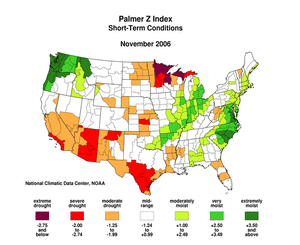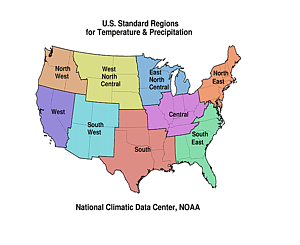At the end of November
drought was concentrated in Texas, Oklahoma and northern Minnesota.
Hydrologic drought continued in the central and northern Plains,
Wyoming and Arizona. Except in Florida, conditions improved in the
Southeast. In Florida dryness has increased in the eastern, and
especially the northeastern, part of the state (November 28 Drought
Monitor). In the drought areas, soil
moisture was low, vegetative
health was fair to poor, and streamflow
was low.
|
|
Mandatory or voluntary
water restrictions were placed in effect in parts of Florida,
Texas, Oklahoma as lake and reservoir levels dropped and other
municipal water supplies were reduced. River transportation was
severely curtailed because of low levels of the Missouri and
Mississippi Rivers and their tributaries. Agricultural impacts of
drought include farmers being driven out of business and hay
shortages in Wyoming, and low crop yields in Colorado, South
Dakota, Missouri and Alabama. Wildlife population declines were
noted in Arizona, Oklahoma and South Dakota, and salt water
intrusion into Florida fresh water streams and lakes threatened
fresh water plants and animals. Burning bans were declared in
Florida and Texas as dry weather increased the potential for
wildfires. The extended drought in Oklahoma, coupled with hot
temperatures, led to a high number of cases of West Nile virus.
Impacts in drought-stricken areas have been collected and
summarized by county at the National Drought Mitigation Center's
Drought Impact Reporter.
|



 NOAA's National Centers for Environmental Information
NOAA's National Centers for Environmental Information
